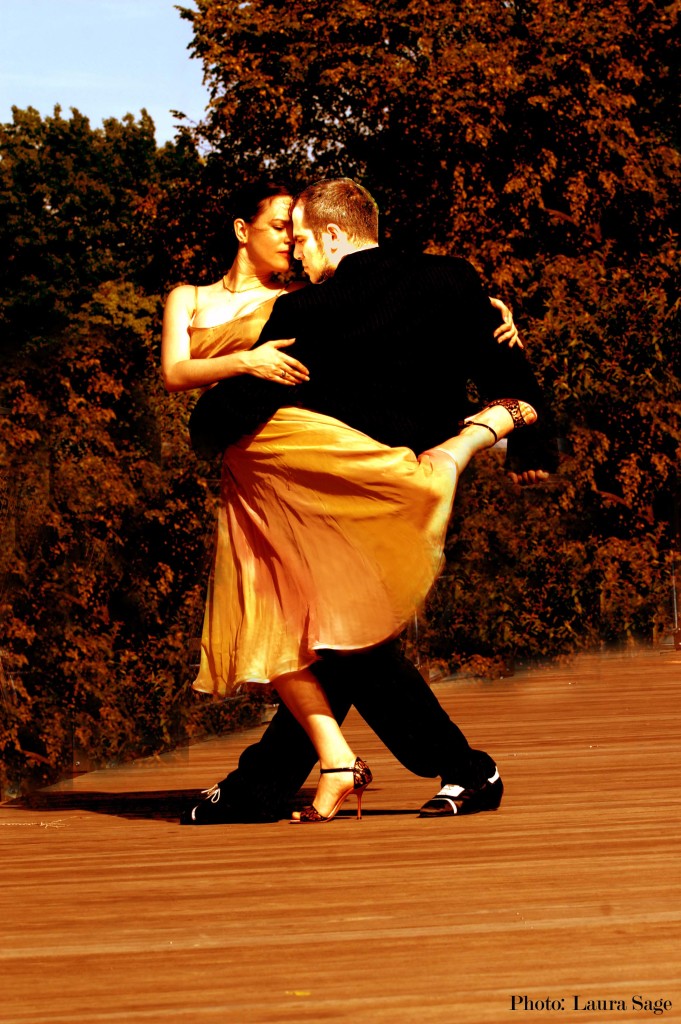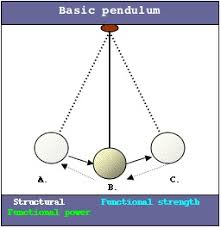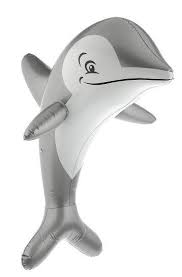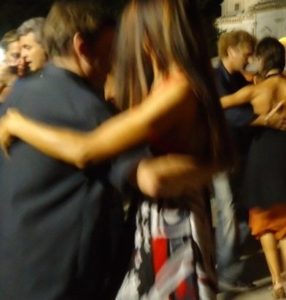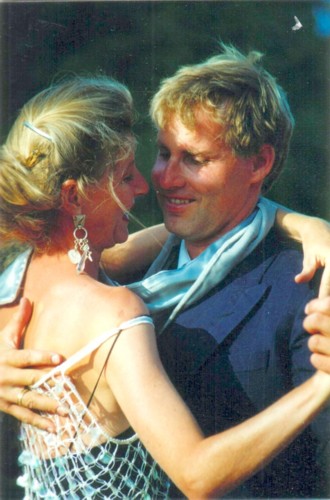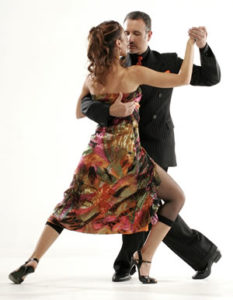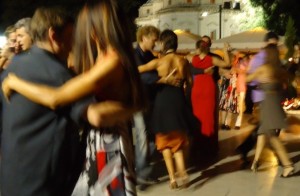In my courses I see again and again that the women believe that they have to work actively with their free leg.
But this is almost never necessary and makes tango dancing less smooth and unnecessarily difficult. Let’s look at a few examples.
Voleo
At a voleo, the lady’s leg flies more or less high.
This works practically by itself due to impulse that the lady receives from the man (impulse to take a step + counter movement before the lady can complete the step and put her leg down) if her free leg is really loose.
However, many ladies believe that they need to actively perform the voleo with their free leg.
Doing it that way they make life unnecessarily difficult for themselves and never manage to create a nice, fluid movement. The Voleo always stays cramped, doesn’t feel good, and never looks good.
It is important and correct to let the free leg relax as much as possible and simply allow the movement.
Backward Ocho
The backward ocho is actually nothing more than a backward cross step by the lady initiated by the gentleman, followed by a a pivot also initiated by the gentleman’s impulse and another backward cross step.
Actually a simple thing if the lady is stable in her axis and her free leg is relaxed. But here, too, many women make life unnecessarily difficult for themselves because they think that the backward ocho is a figure that they have to perform actively.
First mistake:
They turn by themselves, instead of simply letting happen the pivot initiated by the man.
Second mistake:
Because they think that they have to perform the pivot on their own, they often clamp the free leg to the standing leg during the pivot, either because they hope to gain more stability by doing so, or because a tango teacher has told them at some point that this is the way to do it .
The undesirable result: what is actually a simple motion sequence becomes a cramped, labour-intensive, mostly fairly unstable “figure”, which is also bad for the spine in the long term. With a relaxed free leg and simply “allowing” the movement, this is much easier.
Gancho
I seldom lead ganchos, but the same applies here: The lady does not perform the gancho actively, but simply allows her free leg to move.
The gancho is not, as many seem to believe, an active “kicking backwards”, but a bend of the free leg (almost always in the backward motion) caused (not executed) by the lady’s backward step suddenly being stopped just at knee height by the man’s leg.
However, this only works nicely and smoothly if the lady’s free leg is completely relaxed.
There are many more examples of why it is essential for the lady to keep her free leg completely relaxed, but that is beyond the scope of this post.
It is important to first internalize that the free leg is completely relaxed and, if possible, does not work. Then women already have the best prerequisites for dancing beautifully and pleasantly relaxed.
Of course if a woman has more dancing experience she can perform actively embellishments with her free leg.
In this case she works with her free leg and this is no longer relaxed.
The important thing here is to switch back to the relaxed state of the leg when the man gives an impulse to move on to the next step. But for that she needs already a fair amount of experience.
Another article that might interest you.

